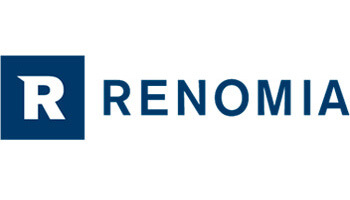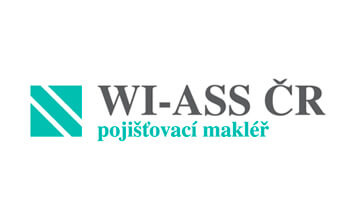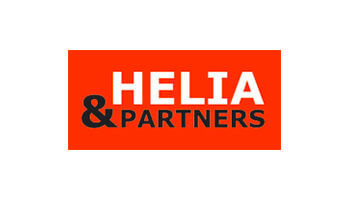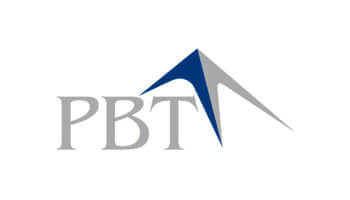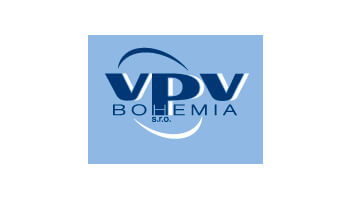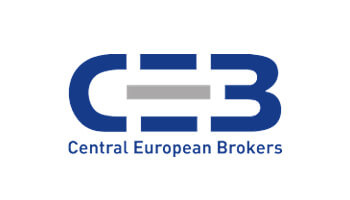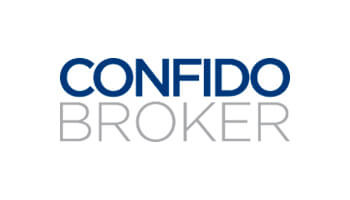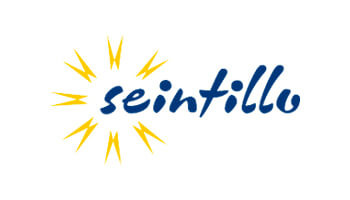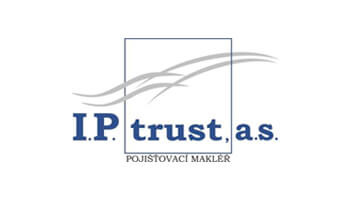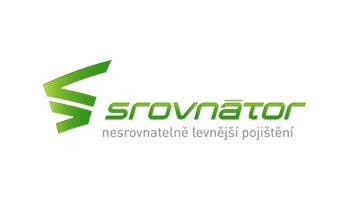For two years, Julo Ferianc was just a contractor for RENOMIA as a software architect and developer. And for two years, he pecked at Pavel Nepal, one of the managing partners, pointing out where there was room for improvement. And what was the result? “Pavel told me not to act smart and to show up instead. To show how digital transformation is done. So, I got down to it with the team. And I immediately challenged Pavel back – to show if he can enforce it, because it will hurt, “ comments Julo on his arrival as CIO of the group. At RENOMIA, he is someone you’ll never meet in the office in a suit, but mainly in jeans and a T-shirt. But forget about established clichés about people from IT. He is not a person who locks himself in the basement and programs something there. On the contrary, he wants to open the world and the benefits of well-built IT to RENOMIA. Gradually over time, sprint after sprint.

What does it mean to be a digital company?
Certainly not that you work on a laptop, you use Excel, Word and email. These are just modern typewriters. Being digital means having a well-built digital infrastructure behind everything you see that can scale business as needed.
How did it happen that RENOMIA started to transform into a digital company?
The management realized a few years ago that if they want to grow in the future as successfully as during the last quarter century, they must change. Otherwise, the world will technologically overwhelm them. At the same time, there was a lot of pressure from the inside. Problems accumulated that the IT department at the time, although under great pressure, did not have a chance to handle. And all these were relatively small and insignificant matters. But they took too much time, and there was no room for the big changes. If you do not do something in such a situation, you are really the risk of missing the imaginary digital train. More flexible competition will grow, and you will no longer be able to keep up with it.
What was your main task in the beginning?
The company has so far grown organically, up to tens of percentage points each year. In twenty-five years, it has become a billion-dollar business. The main ambition for digital transformation is to be able to continue to grow, and not only organically. To be able to scale the infrastructure as needed. That is the technological level. At the mental level, we still need to convince the people in the company and inspire them for change, for new tools and procedures.
What exactly does scaling infrastructure mean?
See how Netflix is growing today. If it adds another million customers overnight, it does not have to open more studios and hire new employees. It has an infrastructure behind it that can easily handle the extra million. And if it loses them again in a month, the infrastructure will adapt. Because if you do not have a million users, but only ten thousand, you do not want to pay a performance equivalent to a million. You cannot, you do not have such an income. Scaling works both ways. So, when we jump by not tens, but hundreds or thousands of percent, for example a million customers a week after an intensive campaign, we do not spend a year trying to prepare the infrastructure for that million. We already have it.
So, when we jump by not tens, but hundreds or thousands of percent, for example a million customers a week after an intensive campaign, we do not spend a year trying to prepare the infrastructure for that million.
How did you get to the digital transformation at RENOMIA?
I started as a supplier – I had my own company. We took part of the then-existing RENOMIA infrastructure and rebuilt it completely. In the architecture of micro services, in a way that is really on the edge of what is possible today. Even our suppliers do not have it as top-ranked as we do. We used to be behind them, now we are ten years ahead.
You have progressed things quite significantly.
Yes. But please note, it is still just a small slice, we’re far from done. We were the first to look at the connection with insurers. It took us two years, we wrote three-quarters of a billion lines of code, and we completely dug it up. Now we need to release this principle to the rest of the organization.
So, you have, let’s say, a basis for digitization?
Yes, we have the foundation of the infrastructure, but it is not just the chassis. It is really something that makes sense. Sort of a little town was created from micro-services that operate across the organization. Because we need to template, generate pdf files, email, search in full text, offer, negotiate contracts, connect with insurance companies, and integrate with external systems. And for all this, we have dedicated services with a certain specialization, which expose their interfaces, so-called APIs, and thus provide their services to the rest of the infrastructure. We now have about 50 such services working seamlessly, and more are being added. This is especially important, because then it is clear who is responsible for what and two things never do the same task. Which is a common flaw in legacy systems, where you do the same thing fifty times and a little differently each time, so you must maintain it and then it is just a headache.
Do people in the company like what you have already done around here?
I hope so. Of course, forcing someone to change is always difficult. Especially if they feel like it’s been going quite well. And I’m saying no, it really hasn’t. That is why we have immediately introduced a modern management style that is making its way into many corporations – agile. And the new teams we built here jumped into it right away, basically on a green field.
How did the old teams react to this?
We try not to divide into new and old. From the beginning, we were probably seen as the smart ones who came to advise everyone on how to do things. But we started delivering and it turned out to work. And that the tools we were introducing make work easier for people. So, we integrated with each other, we help each other and a few days ago we ceremoniously waved the first sprint in the original IT team. Of course, it probably will not work, and the sprint will probably overflow, but that’s normal and we’ll celebrate anyway.
How do these sprints work?
Sprints work in such a way that the IT team delivers something together with the client. It is a contract based on trust and respect for the rules. If the supplier is to deliver something, the contracting authority must not only clearly formulate the assignment, but also promise not to change the conditions, nor to change the assignment or priorities. It hurts both sides, because it is a mutual commitment, it has results.
Of course, forcing someone to change is always difficult. Especially if they feel like it’s been going quite well. And I’m saying no, it really hasn’t.
This means you are transforming not only systems, but also people?
Definitely yes. We must get all our colleagues excited for that, because we don’t have time to lock ourselves in the basement for two years and create something there, we have to deliver continuously. And for that we need the cooperation of the whole organization.
And you have support from above.
Yes, a huge amount. If we didn’t have it, we’d have crapped out a year and a half ago. When executives said they wanted digital transformation, they meant it. And that is quite rare. They believe it and are willing to invest in it, although it is not a cheap affair. And I do not feel like they are running out of breath, on the contrary. Their ambitions are huge.
Is there pressure for speed at the same time?
Of course, yes, but we are not trying to do things at all costs. We are looking for solutions that make sense, it must not just be a hack. We do not even try to work in a “quick and dirty” style. If it is worth it, yes, but it must never undermine the long-term goal of sustainability. We have great support not to create temporary solutions that will soon fall apart. The task is to do things properly, and we have room for that. And this is not seen very often. I have been working in IT for 20 years and this is unprecedented, but very clever.
Then people are really attracted by it, aren’t they?
Sure, I attract people with it at every interview.
We must get all our colleagues excited for that, because we don’t have time to lock ourselves in the basement for two years and create something there, we have to deliver continuously.
Mainly with the cool technology and meaningfulness of what we do. We are looking for people who want to do their job well, not just sit back. Those who care about what is not visible. For example, that there is a nice architecture inside the system. That it is all sustainable, tested, fast and that it makes sense. That we can scale even if we do not have to. That we get some room for innovation and experimentation. We can also explore paths that, for example, turn out to be a dead end or, on the contrary, lead to amazing things.
Can you give an example?
There are many, but I will mention our own language, which we have programmed. With its help, we can non-programmatically describe products. Surprisingly, we called it PDL (Product Description Language). So, we do not program products and validations. We have made the language available to product managers and they can go against us. They can see how products are described, with all their validations, rules, exclusions, and sets. We just involve them in our infrastructure. Simply amazing! And we got space for that. We explained to management what we want. That it will cost some time, effort, and money, but that we are 80% sure that it will be a hit. And it worked.
What interesting tools do you use?
We have a whole toolset because you will not win the war with one tool. We make sure that everything is the best that can be used in the area. Of course, we have a set of technologies in which we are strong, and we naturally prefer them, however, our “API-first” infrastructure brings us technological independence, freedom and great flexibility in how we compose tool technologies. We manage projects in tools from Atlassian – Jira and Confluence. We are great open-source advocates, but we can align and operate them with commercial enterprise tools. With us you will meet Java, C #, React, Python, PosgreSQL, MSSQL, Redis, Elastic Search and also PHP. We can orchestrate all this and operate it locally and in the cloud. To do this, we use a set of tools and technologies like GitLab, Docker, and Kubernetes. We are especially proud of our top DevOps. We can implement new things into production painlessly and uninterruptedly, without the organization even noticing that something has happened. Those night-time events when everything shut down and a bunch of unfortunate IT guys prayed all weekend that no one would shout at them on Monday, that’s not the way it works with us. We can build, test, and deploy all new services directly from the development tools. Without any stress. In addition, everything is fully reversible. So even if something goes wrong, we just go back. What has always been the biggest source of stress is going perfectly well here.




